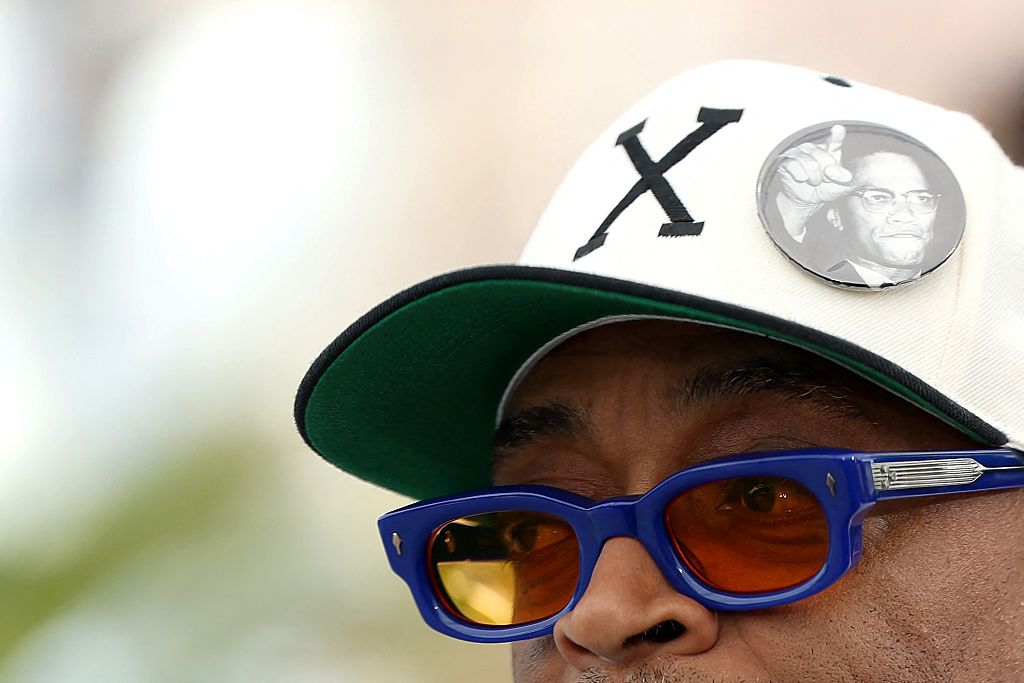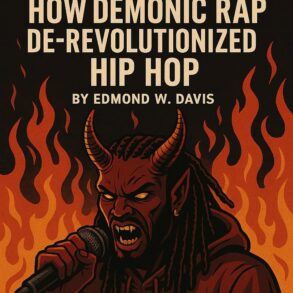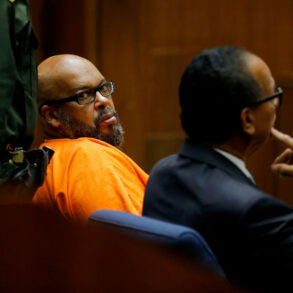It’s been 100 years since the birth of El-Hajj Malik El-Shabazz—better known to the world as Malcolm X. In those hundred years, his legacy hasn’t aged, it’s evolved, sharpened and traveled.

From 1960s press photos to 1990s biopics, 2010s mixtapes to 2020s merch drops, Malcolm X’s voice has never stopped echoing. Instead, it’s been remixed across mediums and generations, reintroduced to the masses as more than a martyr. He’s become a template. A timeline of resistance—written in bold, block font and worn on hoodies from Harlem to London.
This isn’t nostalgia. It’s testimony.
The Blueprint: Malcolm in the 1960s and ’70s
Before the movies, the music, or the fashion lines, there was the man. Malcolm Little. Detroit Red. Minister Malcolm. El-Hajj Malik El-Shabazz. His evolution—from street hustler to Black nationalist to international human rights advocate—set a framework for public transformation that continues to inspire cultural creators.
His 1965 autobiography, co-written with Alex Haley, remains one of the most assigned, banned, and debated pieces of literature in American classrooms. By the 1970s, Malcolm’s philosophies were already being studied, politicized, and reshaped by the Black Power and Pan-Africanist movements.
This is where the ripple began. The style, the language, the posture—it all became part of the brand before branding was even a thing.
Reenactments & Rhetoric: 1990s Film & Cultural Reawakening
The early ‘90s introduced Malcolm X to new generations through the lens of cinema. Spike Lee’s Malcolm X (1992) wasn’t just a film—it was a reintroduction. Denzel Washington didn’t perform the role—he inhabited it. The film’s reach extended beyond theaters. It moved into classrooms, barbershops, sermons. Malcolm’s speeches were suddenly playing in surround sound.
Lee’s visual storytelling not only reignited global conversations about Malcolm’s message but cemented his imagery—raised finger, dark-rimmed glasses, slick part—as a cultural shorthand for righteous rage and Black dignity.
Washington’s performance earned Oscar nominations, but more than that, it turned Malcolm from a chapter in a textbook to a presence you could feel in the room.
Sampling The Spirit: Malcolm In Hip-Hop
If Spike Lee brought Malcolm’s image to the screen, hip-hop brought his energy to the booth. The late ‘90s and early 2000s saw Malcolm referenced not just in samples, but in symbolism. 2Pac’s interviews spoke of Malcolm the same way he spoke of his own contradictions. Jay-Z rapped about being “Malcolm before he turned Muslim.” Public Enemy practically ran on Malcolm’s cadence.
By the time Kendrick Lamar released To Pimp a Butterfly in 2015, Malcolm’s spirit was already encoded into the genre’s DNA. Lamar’s work doesn’t just echo Malcolm—it extrapolates from him. Anger becomes art. Protest becomes production. It’s Malcolm in an 808.
It’s not just the lyrics. His image remains one of the most circulated on hip-hop album art and stage visuals. The message still bangs. The brand still sells.
Style As A Statement: Malcolm In Fashion
The way Malcolm carried himself in the 1960s; immaculate suits, clean lines, deliberate posture wasn’t vanity. It was strategy. He knew what many now brand as “aesthetic” was, for him, armor. Respect, before they heard a word.
Now, that same intentionality lives on in what we wear. His daughters launched the Malcolm X Legacy line, plastering his quotes on hoodies and jackets like street art. In 2025, the Detroit Pistons dropped a capsule collection in his honor, fusing sportswear with sociopolitical messaging. Spike Lee also did the same, dropping a capsule titled “40 Acres and a Mule,” named after the broken promise made to newly freed slaves following the civil war. Public School, in collaboration with the Gordon Parks Foundation, created garments using historic photos of Malcolm as art.
Wearing Malcolm isn’t cosplay. It’s alignment. Malcolm understood first impressions and optics; expression is not only verbal but physical.
The Gen Z Chapter: Legacy In Real Time
Gen Z didn’t meet Malcolm in a mosque or a book. They met him in carousel posts. On TikTok. On the back of a hoodie at a protest. And yet, they’ve taken his messaging and made it their own.
Dr. Ibram X. Kendi’s “Malcolm Lives!” is giving grade-schoolers access to Malcolm’s life without watering down the mission. Meanwhile, The Autobiography of Malcolm X is having a second wave on BookTok (Tiktok community of readers), with younger readers stitching quotes into video essays and breathlessly annotating his words.
This generation isn’t asking for permission to understand Malcolm. They’re applying the principles in real time: disrupt loudly, move smart, and never dilute the message.
Final Word: 100 Years Later, Still Making Noise
A century after his birth, Malcolm X still speaks.
He speaks in the lyrics we stream. In the fashion we flex. In the books that get banned—but we find and read anyway. He speaks through the children learning to raise their voices, and through the adults still unpacking his complexity.
He warned us he’d be mischaracterized. He told us this country would rather fear him than fix itself. But here we are. Quoting him. Dressing like him. Thinking more like him with each decade.
The future he fought for is still unfinished. But the culture hasn’t forgotten who drew the blueprint.
This post was originally published on this site be sure to check out more of their content.







